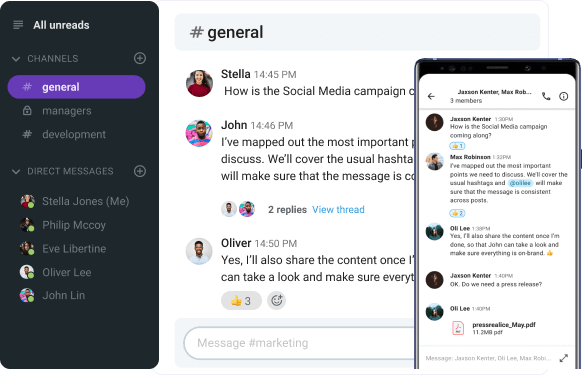When you work closely with others, it’s only natural to have conflicting ideas about how to approach a task or project. You might also clash with coworkers due to differences in personalities, beliefs, or even misguided emotions.
As sure as the sun will rise, workplace conflicts will happen — and you’ll likely find yourself in the middle of one at some point. So, instead of trying to avoid disagreements at all costs, it’s better to learn how to handle them.
In this article, you will:
- Learn why the wrong words get you in trouble during a conflict and
- Discover 15 conflict resolution phrases (with examples) to help you steer any disagreement in a healthy, constructive direction.
Let’s get into it.

Table of Contents
Why words get us in trouble in conflicts
Conflicts in the workplace are a normal and expected occurrence. They are not harmful by default — it’s how we communicate around them that can result in heated confrontations.
According to William Ury, co-founder of Harvard’s Program on Negotiation, our words often get us in trouble because of deeply human, instinctive reactions:
- We speak without thinking. Strong emotions like fear or anger take over, and we react instead of responding calmly.
- We fall into the “Three A’s” trap. We attack, avoid, or accommodate — none of which actually address the conflict productively.
- We lose sight of the bigger goal. In the heat of the moment, we forget what we really want and how to express it.
Once you become aware of these “traps”, you can better notice them in yourself and others. As a result, you’ll be able to avoid letting them sway you into a heated argument — and focus on healthy conflict resolution instead.
Perfect phrases for conflict resolution at work (and those to avoid)
Here, we’ll cover 15 amazing phrases for conflict resolution that skilled communicators use to settle any argument without hostility. We’ll also:
- Provide additional context for their use,
- Explain why they work, and
- List some of the alternatives you should avoid at all costs in a given situation.
To make these phrases even easier to apply, we’ve included real-life examples from the team communication app Pumble, so you can see how they work in context.
#1 ‘Let’s take a break and get back to this issue when we’ve thought about it and cooled down a bit.’
When to use it: You can use this phrase when you notice the argument is getting out of hand, and one or both of you is succumbing to negative emotions. You can also pull this card if you come to an impasse that makes you both impatient for your argument to win.
Why it works: Taking a break from a confrontation allows you both to cool off and get a fresh perspective on the matter. In most cases, there is a logical solution to the problem, and what’s preventing you from seeing it is your instinct to prove you’re right. However, once you agree to take some time off to think things through, it’s also essential to specify when you’ll get back to the issue so that it doesn’t end up unaddressed in the end and come back to haunt you.
Use it instead of these phrases:
- “I can’t deal with this right now.”
- “You’re clearly wrong!”
- “This will never work.”
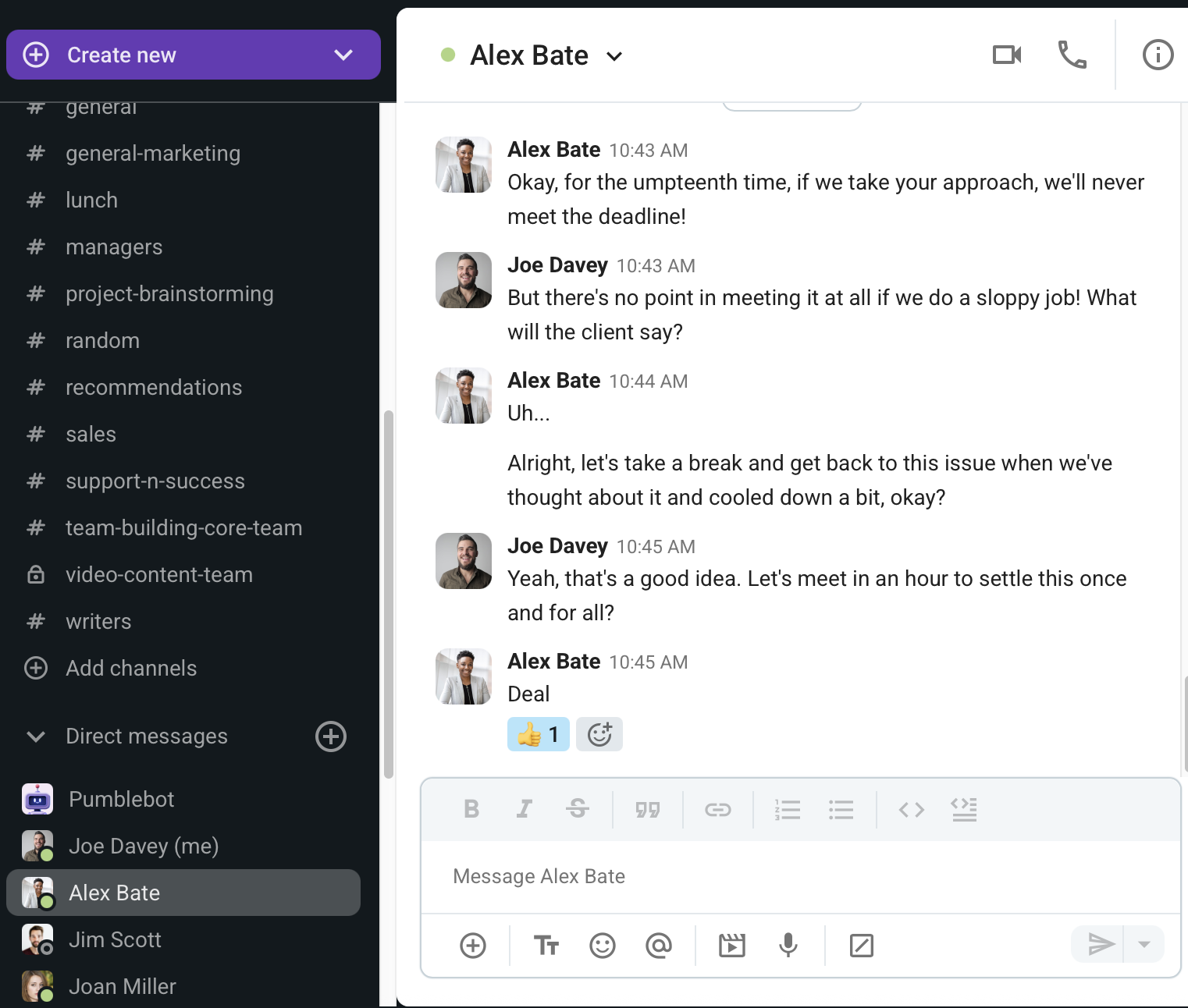
Defuse conflict faster — try Pumble
#2 ‘Help me understand where you’re coming from.’
When to use it: When you don’t necessarily agree with what the other person is saying or you don’t understand how they came to the idea they’re advocating, you can say this to elicit more information.
Why it works: One of the most common communication challenges at work is negative attitudes, and they can exacerbate a conflict. If someone gives you critical feedback and you get defensive, you’re missing out on the opportunity to understand where the other person is coming from, even if you don’t agree with them. By asking for clarification, you get further insight into their motives and rationale.
Use it instead of these phrases:
- “What exactly are you implying?”
- “That makes no sense.”
- That’s ridiculous!”
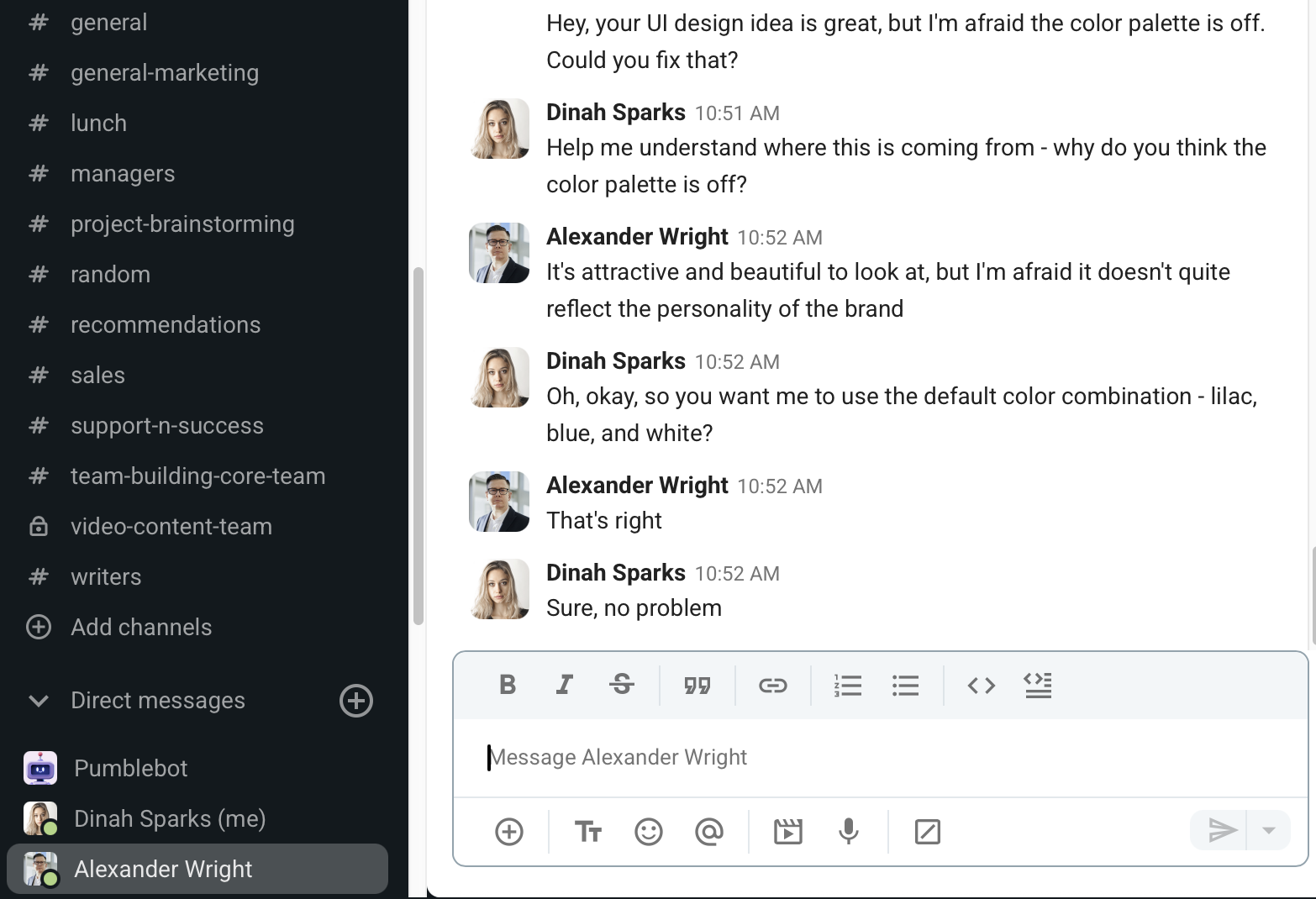
#3 ‘Thank you for being honest with me.’
When to use it: This phrase is best for situations where someone is being critical of you — especially if it’s a subordinate who’s providing upward feedback. It’s also great to use when a colleague is directing criticism at you and they are upset about the issue at hand.
Why it works: The phrase is incredibly effective because it lets the other person know that you’ve truly heard them and, more importantly, you appreciate that they chose an assertive communication approach instead of them talking about you behind your back. It also allows you to put yourself in a positive frame of mind so that you can consider what they’re saying instead of just getting hurt and passive-aggressive.
Use it instead of these phrases:
- “Wow, I didn’t realize you thought so little of me.”
- “I’m ___ (e.g. sloppy)? Look who’s talking!”
- “What’s that supposed to mean?”
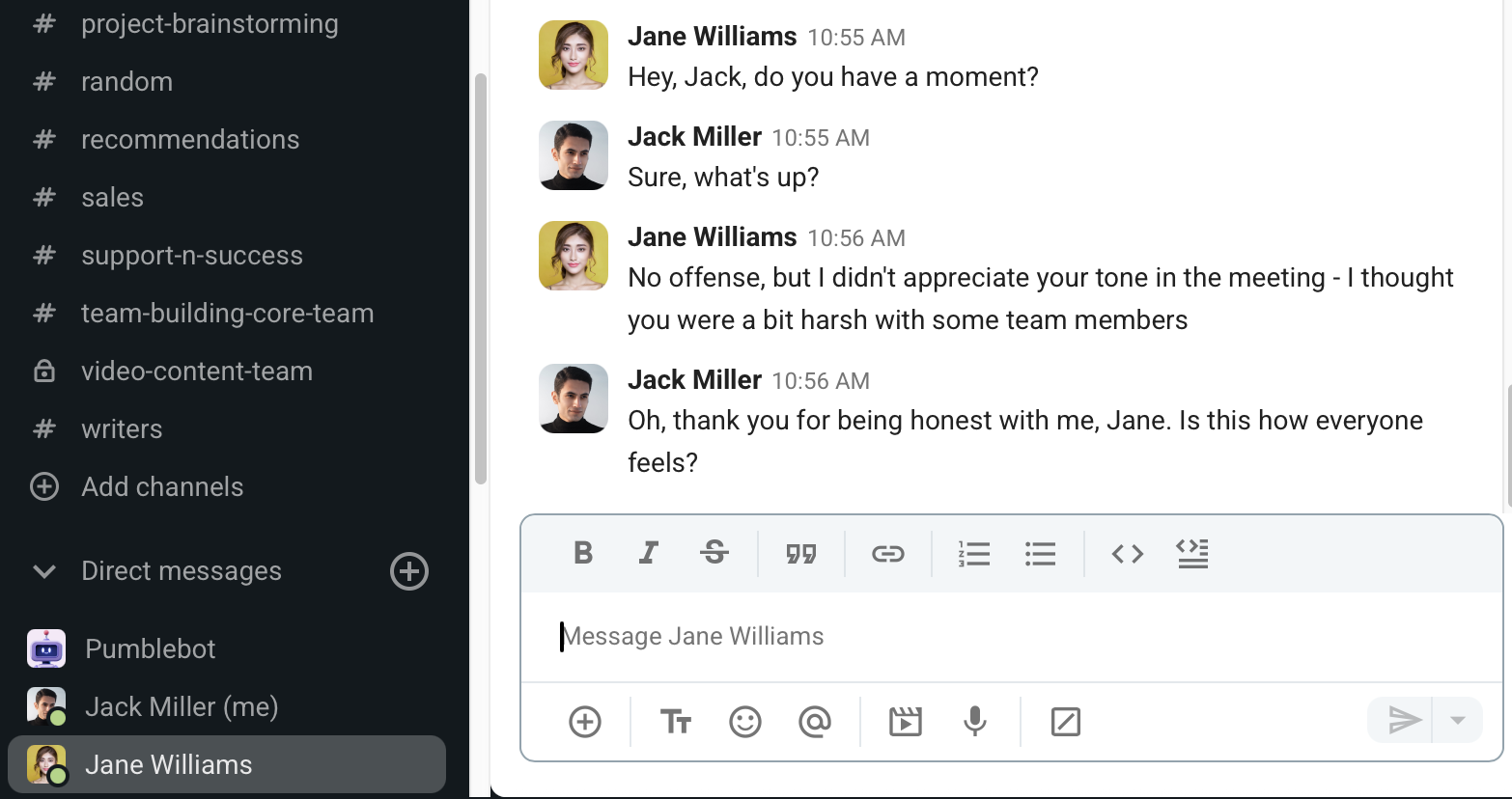
#4 ‘How can I support you?’
When to use: This phrase should be a staple of any leader’s communication style and vocabulary. You can use it if one of your employees feels upset, hurt, underappreciated, or is coming to you with a complaint. However, the phrase is not reserved for leaders alone — anyone at the workplace can benefit from using it.
Why it works: You’re showing the other person that you truly care about them and want to do what’s best to ease the situation. Using these conflict resolution words also showcases your willingness to actively listen and understand where their pain, stress, or frustration is coming from. By offering support, you disarm them and help them let down their guard.
Use it instead of these phrases:
- “What am I supposed to do about it?”
- “That’s a ‘you’ problem.”
- “You’re such a baby!”
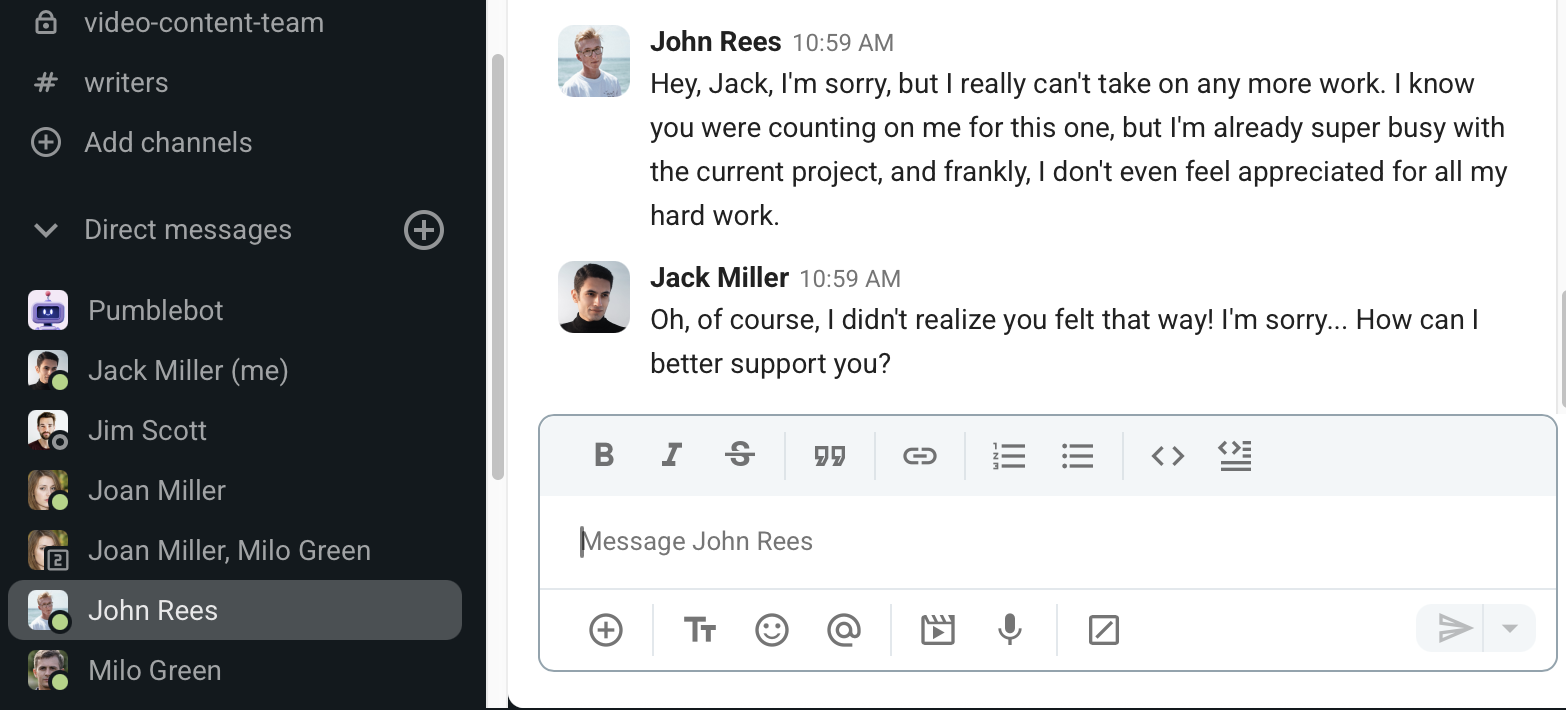
Make difficult conversations easier with Pumble
#5 ‘What I heard you say is… Did I get that right?’
When to use it: When you’re not sure you’ve understood something correctly, especially if that something has the potential to wreak havoc on your interpersonal relationships at work, it’s best to check if you’ve got the gist of the issue.
Why it works: One of the most important rules of workplace communication etiquette is to keep the conversation clear and simple so that there’s no danger of it leading to misunderstandings. That’s why asking for clarification is important. If you throw a fit before you’ve checked whether you’ve correctly understood your interlocutor, you risk starting a fight for no good reason.
Use it instead of these phrases:
- “You’re kidding me, right?”
- “I can’t believe you’ve just said that to me!”
- “Can’t you just speak plain English?”
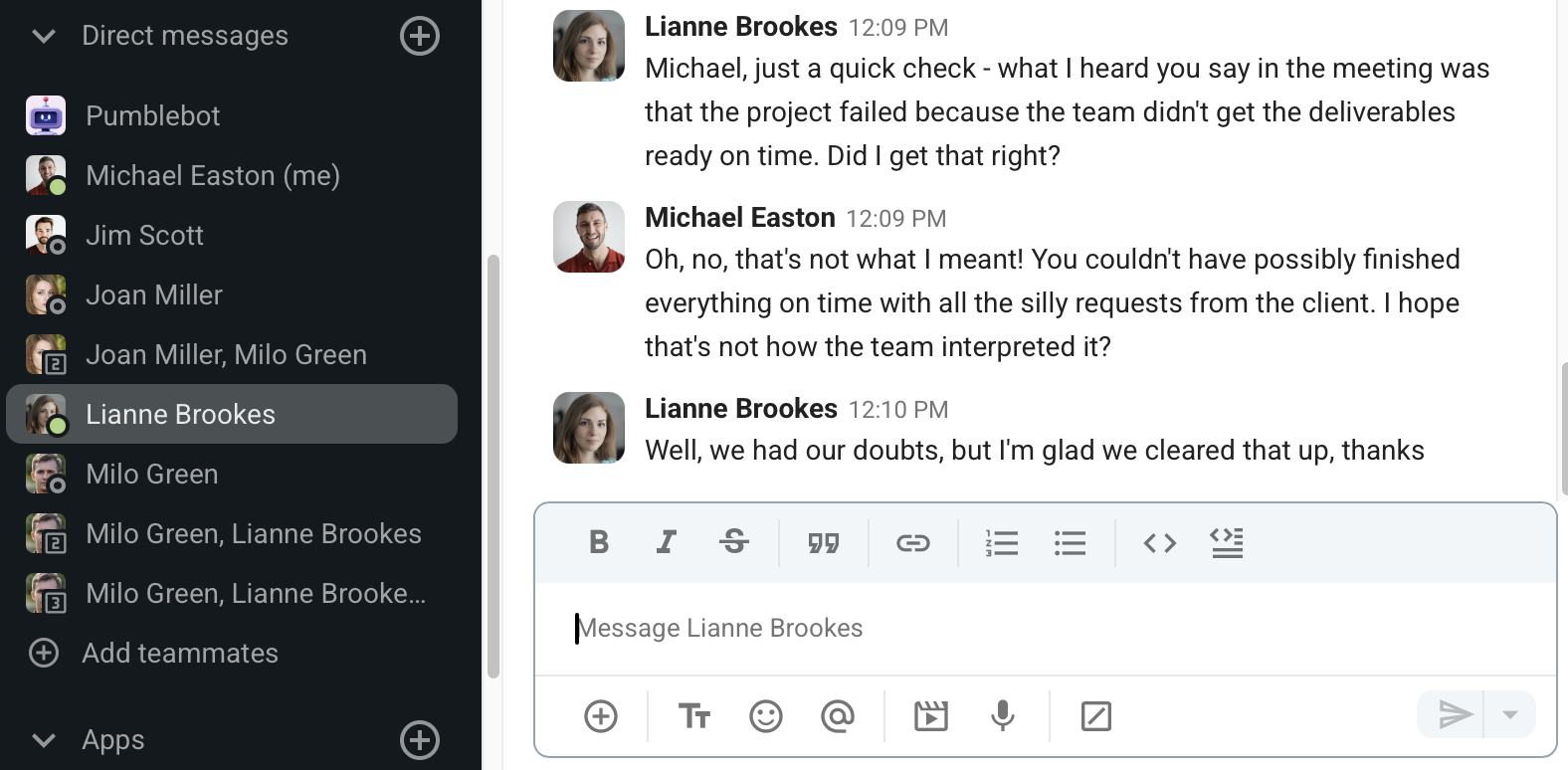
#6 ‘When you said/did that, I felt…’
When to use it: You can use this phrase when you want to confront a coworker about something they said or did that (inadvertently) affected you in a bad way.
Why it works: Language plays a vital role here. Instead of attacking them with “you made me feel…”, implying they’re directly responsible for your feelings, you take ownership of your emotions (“I felt…”), while letting them know their words or actions were hurtful. So, you’re not accusing them of being a bad person, but rather their words/actions of being inappropriate, which makes a world of a difference and is less likely to make them defensive.
Use it instead of these phrases:
- “How could you have possibly done that?”
- “You’re a terrible person!”
- “You make me boil with rage!”
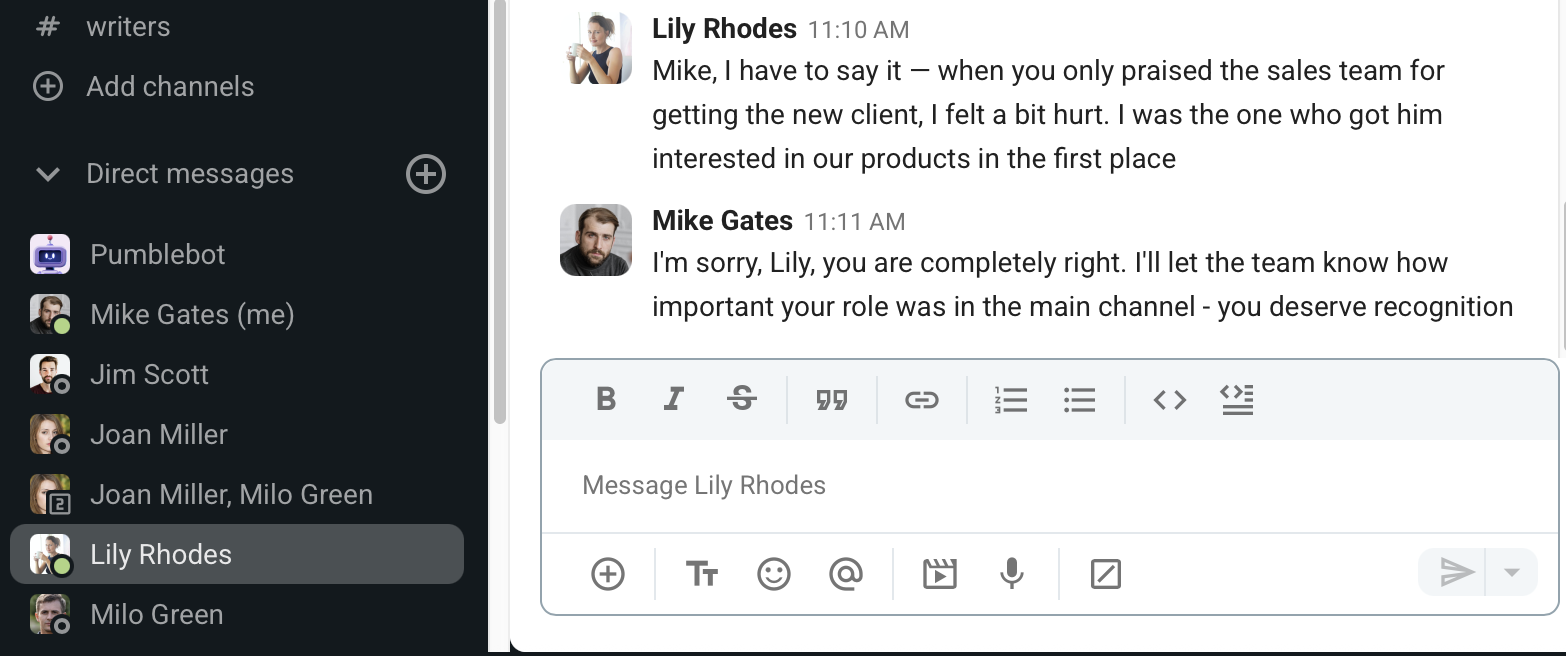
#7 ‘I agree with you on…’
When to use it: When you’re having a disagreement with someone at work (usually about the way to proceed on a shared task or project), but there are still some points you agree on, it’s best to start from them if you want to defuse conflict and improve collaboration.
Why it works: Agreement on some points sets a common ground from which you can build on. Acknowledging the fact that your views on the matter are not entirely opposing can also reduce the frustration that can build up due to your inability to find a solution and focus your minds on the solvability of the problem, rather than leaving you mentally stuck in a stalemate.
Use it instead of these phrases:
- “That’s a stupid idea.”
- “I give up! Just do whatever you want.”
- “We’ll do it my way or I’m out!”
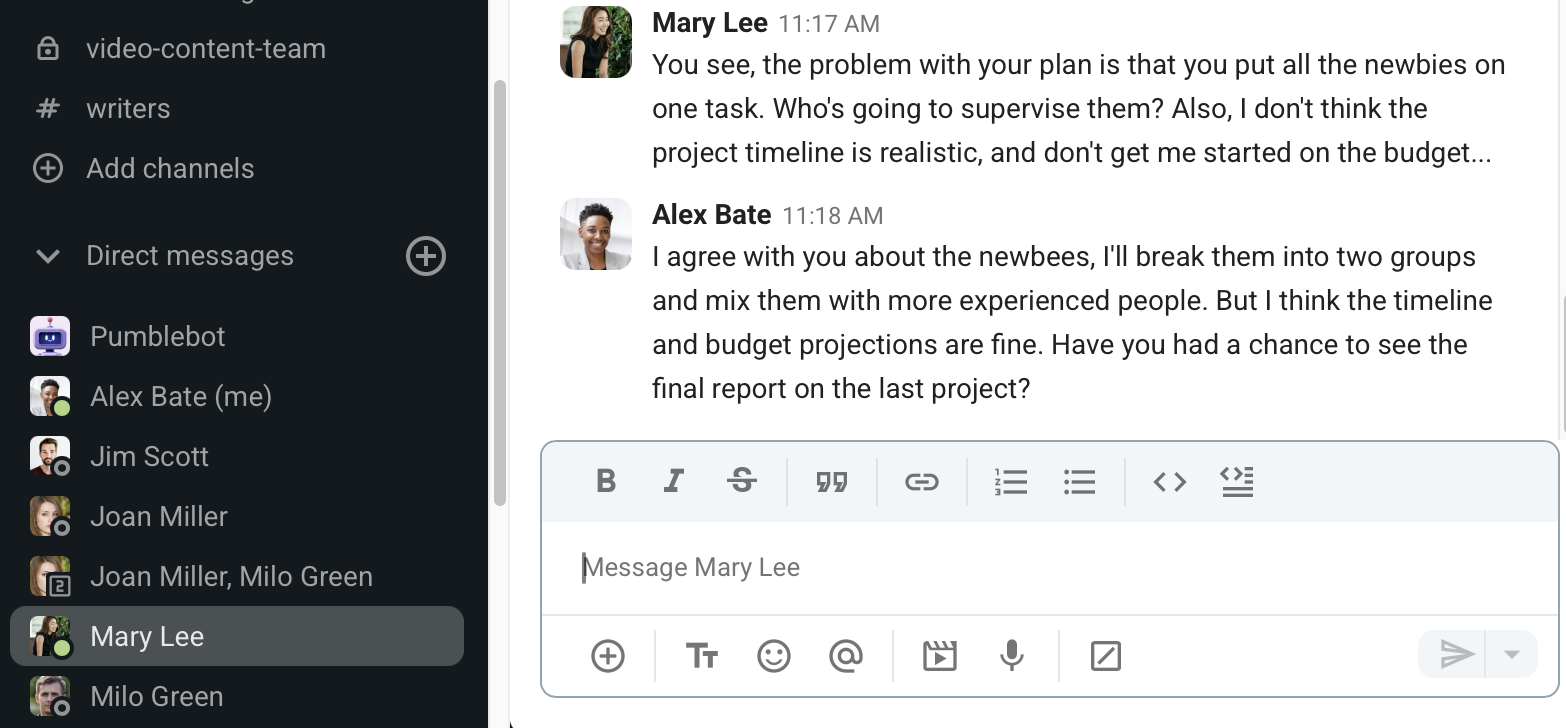
Collaborate through conflict with Pumble
#8 ‘Let’s work on this problem together.’
When to use it: This phrase can come in handy when you want to avoid finger-pointing and playing the blame game, especially if you’re a manager trying to stop a conflict from escalating. It can also work well if you want to help someone fix a mistake they made, without making them feel under attack.
Why it works: It’s great because it inspires healthier team communication and team spirit. Also, when you point out an issue this way, you’re setting a safe psychological space to work from instead of making the person feel threatened.
Use it instead of these phrases:
- “This is all your fault!”
- “You need to fix this.”
- “We could have avoided this if John didn’t mess up — just saying!”
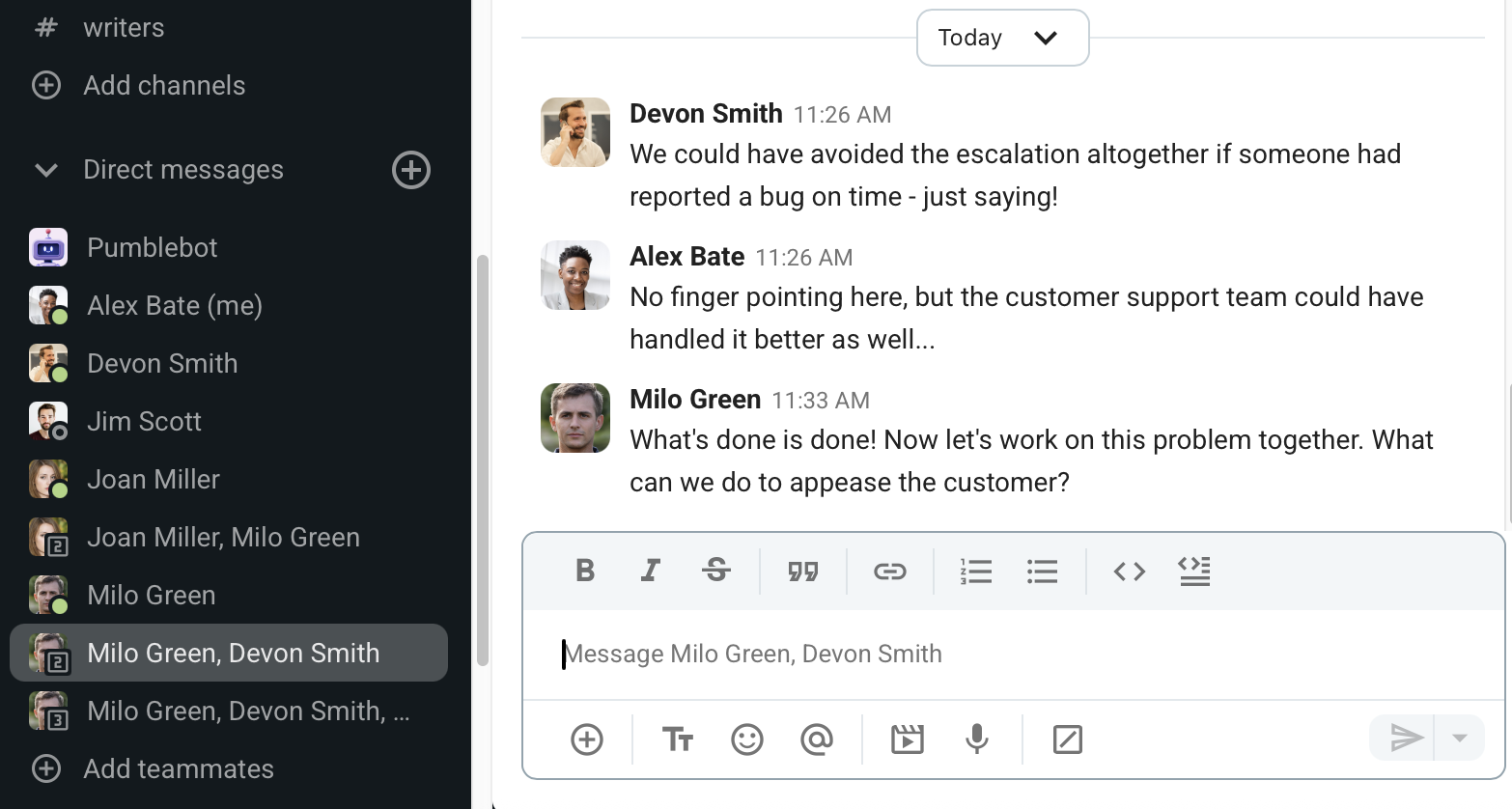
#9 ‘I see how I’ve contributed to the problem.’
When to use it: When someone brings to your attention that you did something wrong, it’s best to admit it straight away and start the conversation from there.
Why it works: Admitting your mistakes is always a good idea — making them is human. But it’s incredibly irresponsible not to admit you’ve made them. What’s more, when you recognize you’ve made a mistake, you’re showing the other person that you’re willing to cooperate and let yourself be vulnerable with them. This vulnerability is bound to dispel negative emotions.
Use it instead of these phrases:
- “Why are you always picking on me?”
- “Oh, so everything’s always my fault!”
- “Sure, you’re entitled to your opinion.”
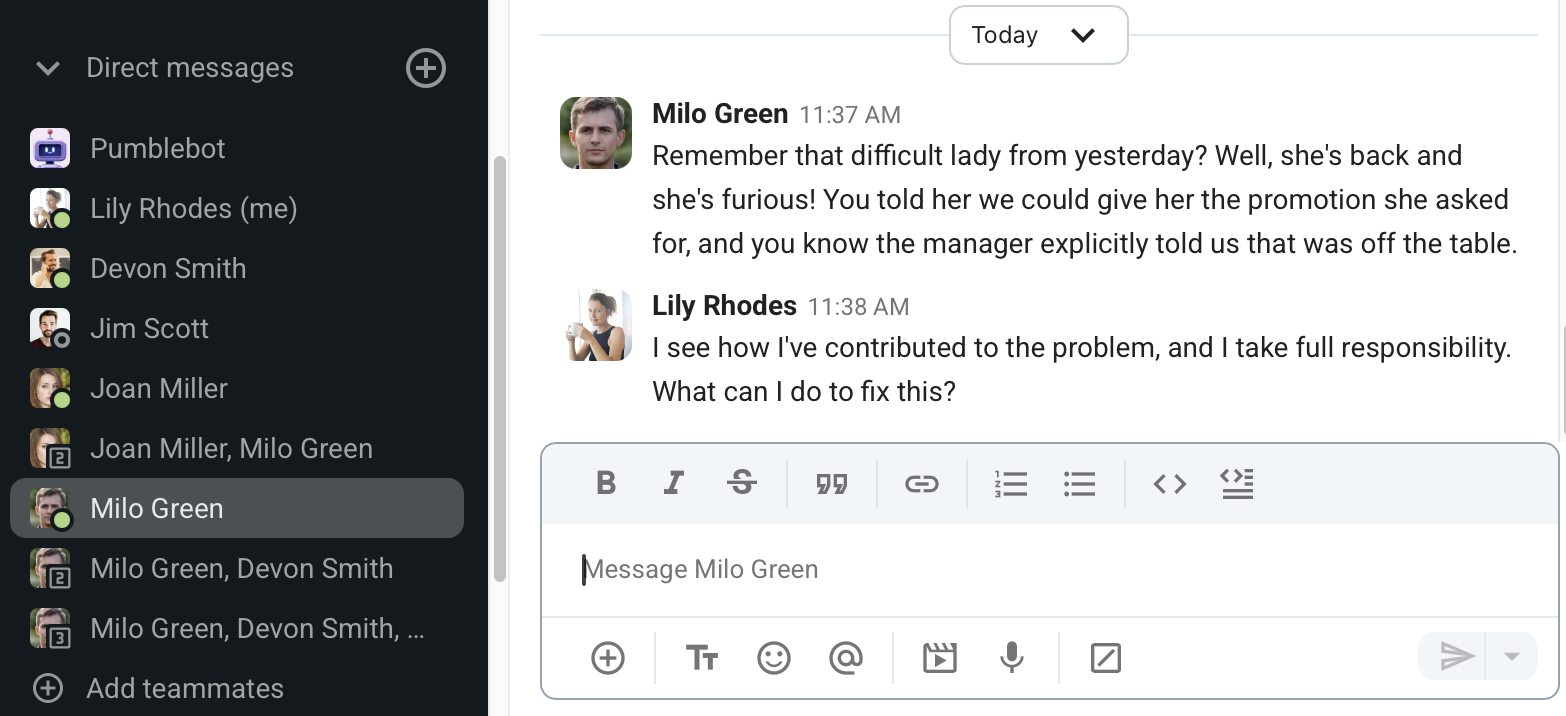
#10 ‘I’m sorry.’
When to use it: Building on the previous example, once you’ve realized you’ve made a mistake — especially when you’ve directly wronged the other person — it’s only decent to let go of your ego defenses and apologize.
Why it works: A sincere apology has the power to mend a relationship in a heartbeat. However, beware that an insincere one can further exacerbate the conflict because it can sound dismissive. So, don’t apologize just to stop the argument if you don’t mean it.
Use it instead of these phrases:
- “Whatever, my bad, can we just move on?”
- “You’re lying.”
- “I wouldn’t have done it in the first place if you hadn’t ____ (messed up first)!”
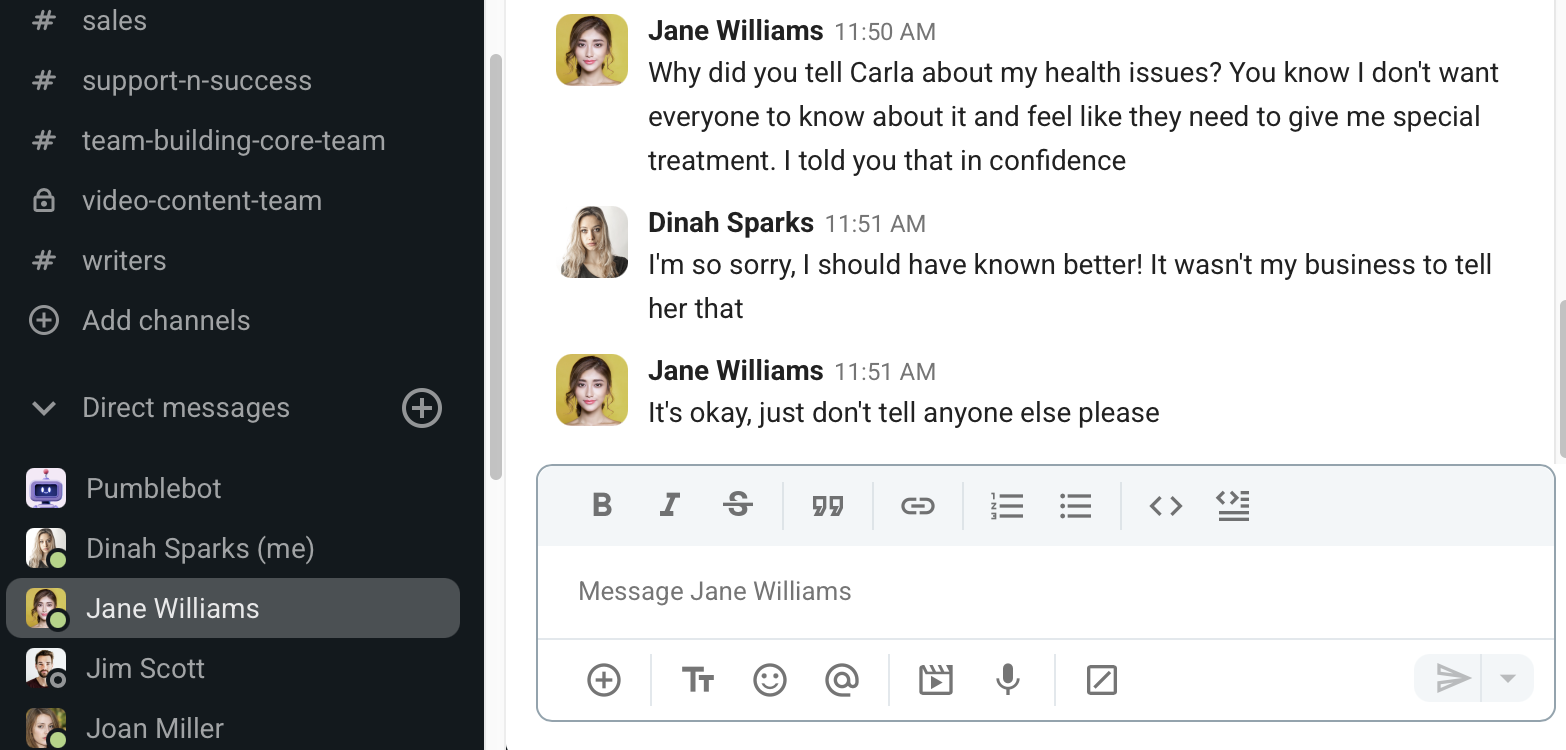
💡 PUMBLE PRO TIP
Want to go deeper on how to say sorry the right way at work? Check out our guide on the topic for practical tips and examples:
#11 ‘What do you suggest we do about this?’
When to use it: This phrase is universally applicable — every conflict involves at least two people, and the best way to de-escalate it is to work on it together.
Why it works: It’s effective for multiple reasons. The “we” part implies that you’re willing to approach the problem as a team rather than blame each other for it. Furthermore, by asking for their advice, you’re letting them know that you value their opinion and input and are taking the issue seriously.
Use it instead of these phrases:
- “I really don’t care about this.”
- “That’s not my problem.”
- “Subject closed!”
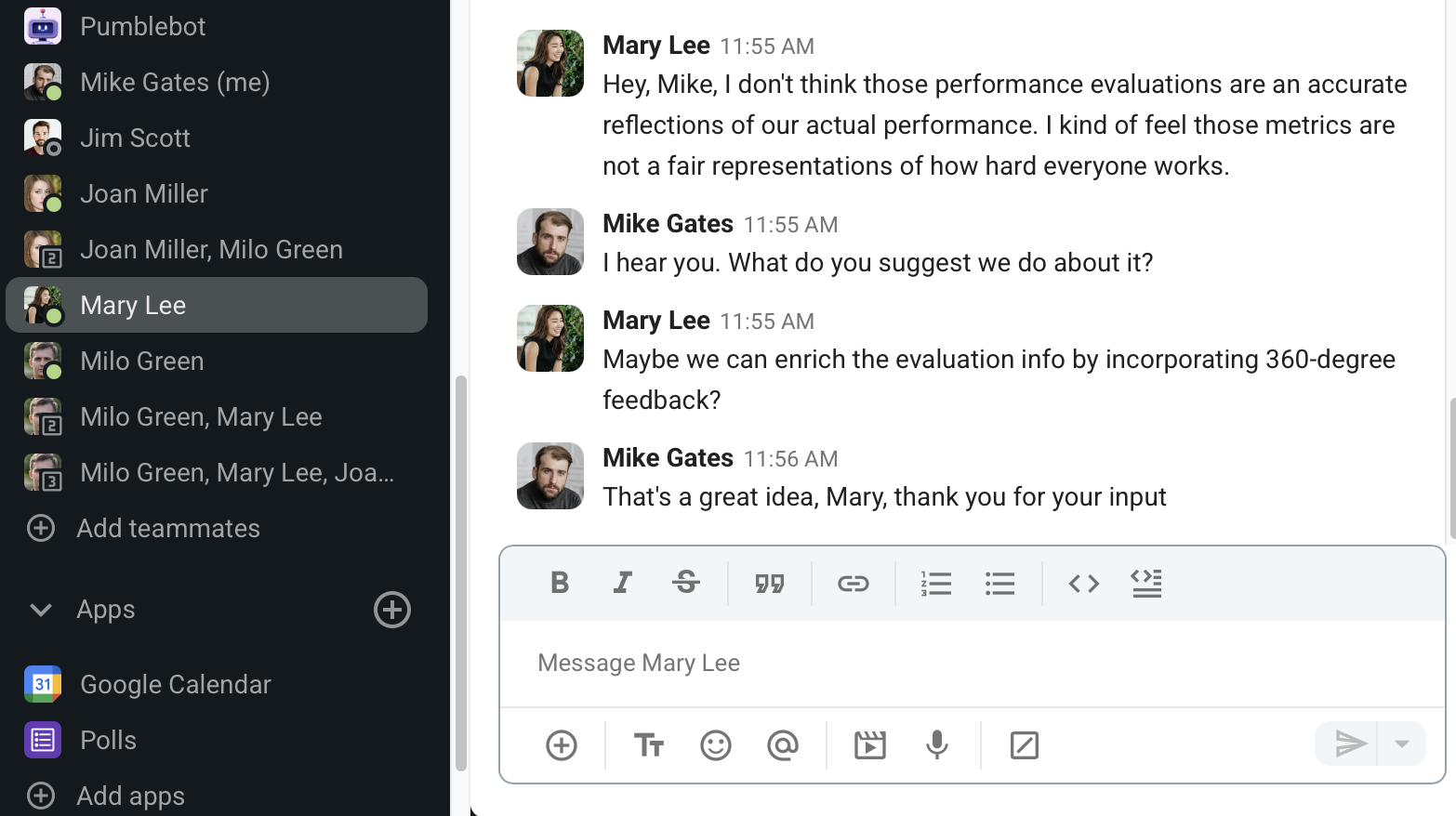
Communicate clearly, even under pressure using Pumble
#12 ‘Let’s see how we can prevent this from happening in the future.’
When to use it: You can use this phrase when you want to shift focus from finding someone to blame to figuring out what caused the problem and how you can stop it from happening again. Leaders usually use this when they understand that no single person failed, but a flaw in the system as a whole caused the problem.
Why it works: This phrase puts the conflicted parties at ease because it pits them against the problem — not against each other. They are encouraged to find the solution instead of finding each other’s faults. The phrase also shows the willingness to solve the problem once and for all and leave it behind.
Use it instead of these phrases:
- “Whose ‘brilliant’ idea was this?”
- “Okay, who messed up this time?”
- “Who came up with this stupid plan?”
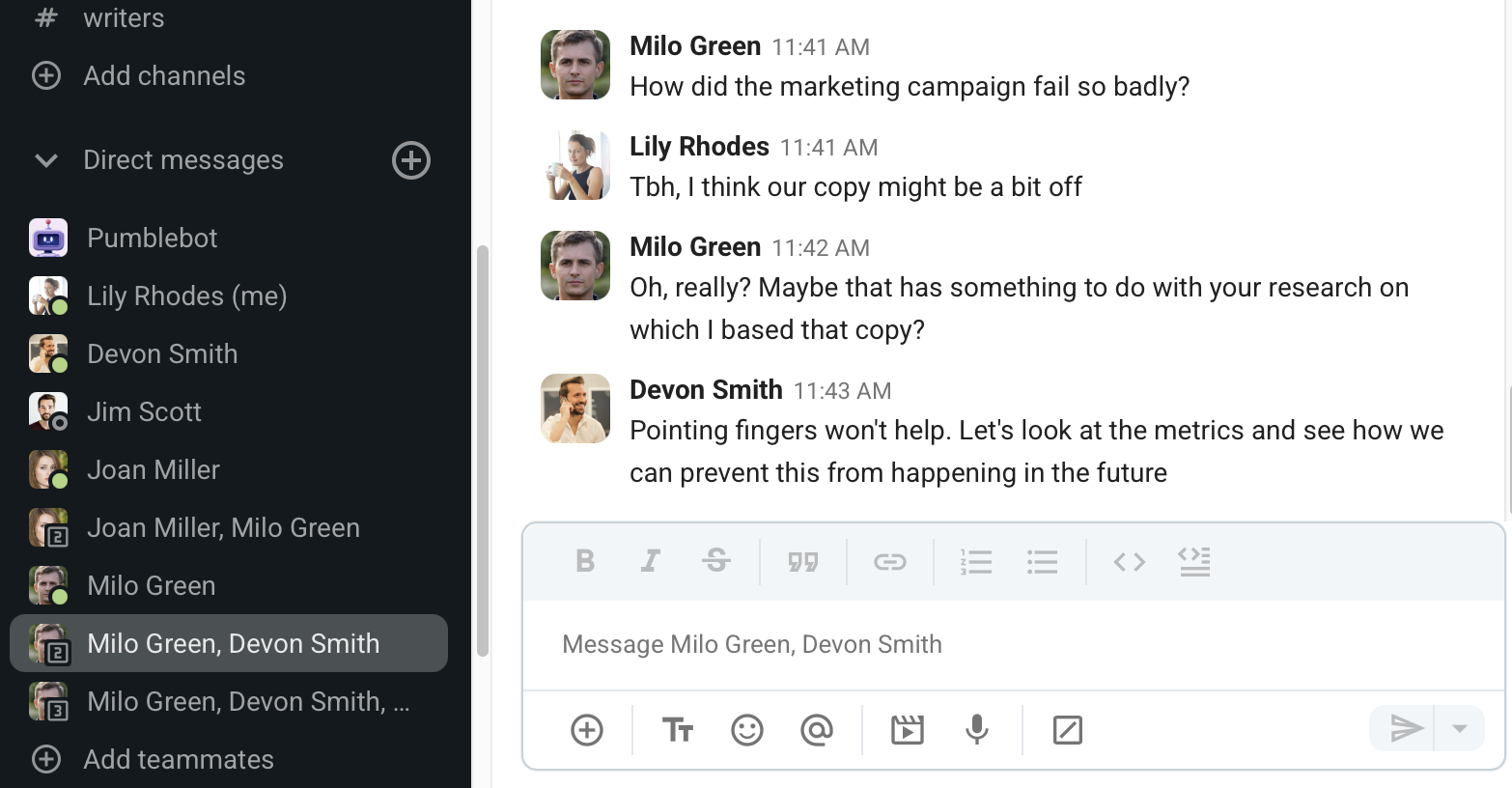
#13 ‘I hear your point, but I have a different view.’
When to use it: This is a great phrase to use to present your arguments while also acknowledging the validity of the other person’s perspective. It’s a nice way to set a respectful tone of the argument from the start, instead of getting impatient and giving in to negative emotions.
Why it works: Even if the other person was feeling passionate about their point of view and started the argument with the sole purpose of winning, this phrase will help ground them and remind them that it’s not a competition.
Use it instead of these phrases:
- “Are you listening to yourself?”
- “That makes no sense.”
- “I don’t care what you think!”
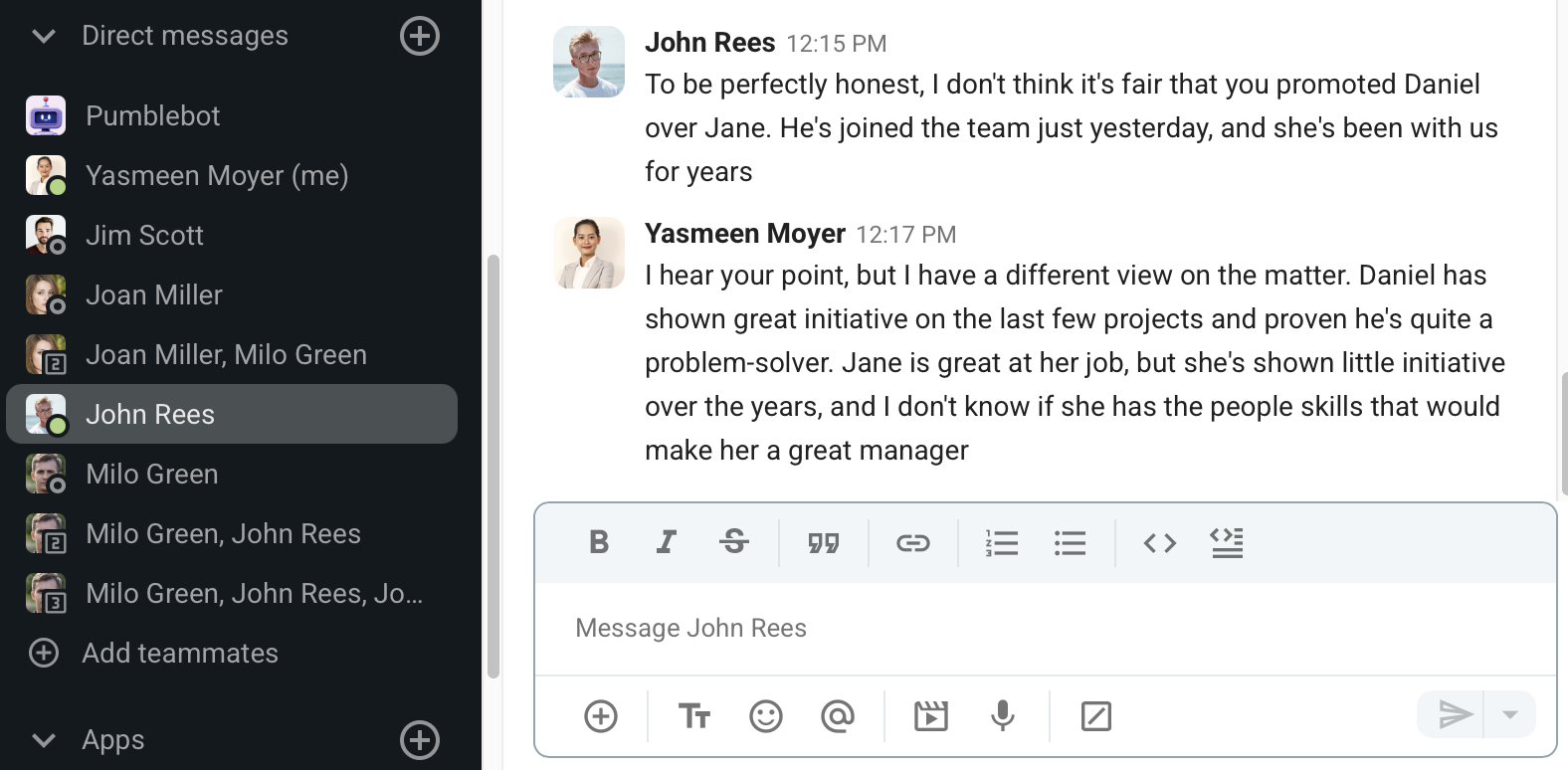
#14 ‘Agree to disagree?’
When to use it: You can resort to this “conclusion” when you’re in the middle of a bitter argument on a subject you really don’t have to agree on, i.e. it’s non-essential for your day-to-day tasks or your relationship with the other person.
Why it works: Respectfully disagreeing on a non-essential subject can save you from damaging your work relationship over a trivial matter. When you make it clear to the other side that you appreciate the debate and respect their opinion but are unwilling (or unable) to change your stance on the issue, both of you can breathe a sigh of relief and go on with your day without harming your relationship.
Use it instead of these phrases:
- “You clearly have no idea what you’re talking about.”
- “I don’t understand how you could even think that.”
- “Stop trying to persuade me, it’s never gonna work!”
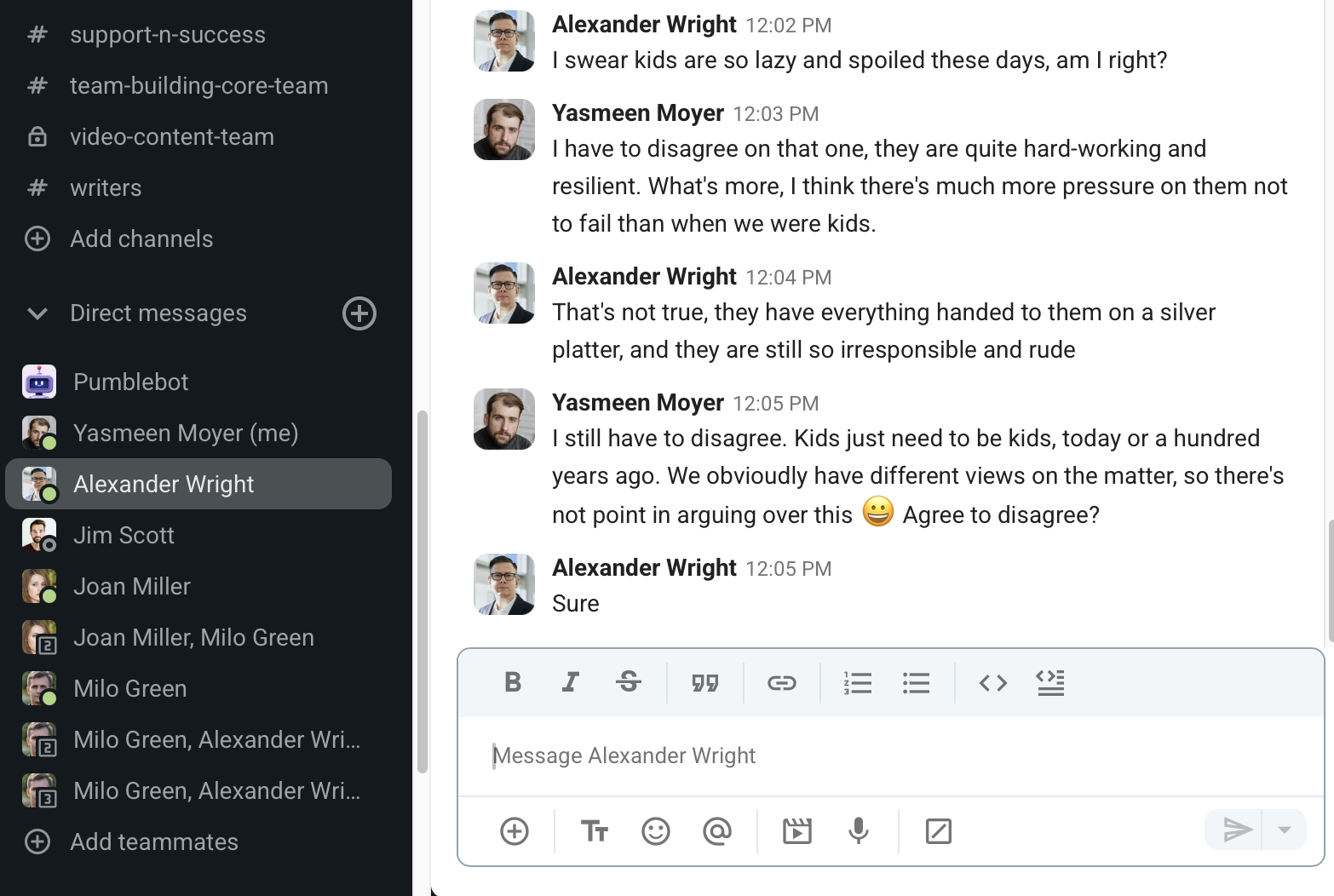
#15 ‘I recognize your hard work…’
When to use it: This is a good way to start a conversation if you want to provide constructive feedback on the results of someone’s work, but let them know you appreciate their efforts. This type of recognition is especially important in downward communication, i.e. from higher-ups to subordinates.
Why it works: Letting people know you believe they made an effort, even if it was unsuccessful, will put them at ease because it shows them you appreciate them and their work. They won’t feel like you’re placing blame on them, but rather like you are trying to help them grow.
Use it instead of these phrases:
- “You messed up big time!”
- “You idiot, how could you miss that?”
- “What were you thinking?”
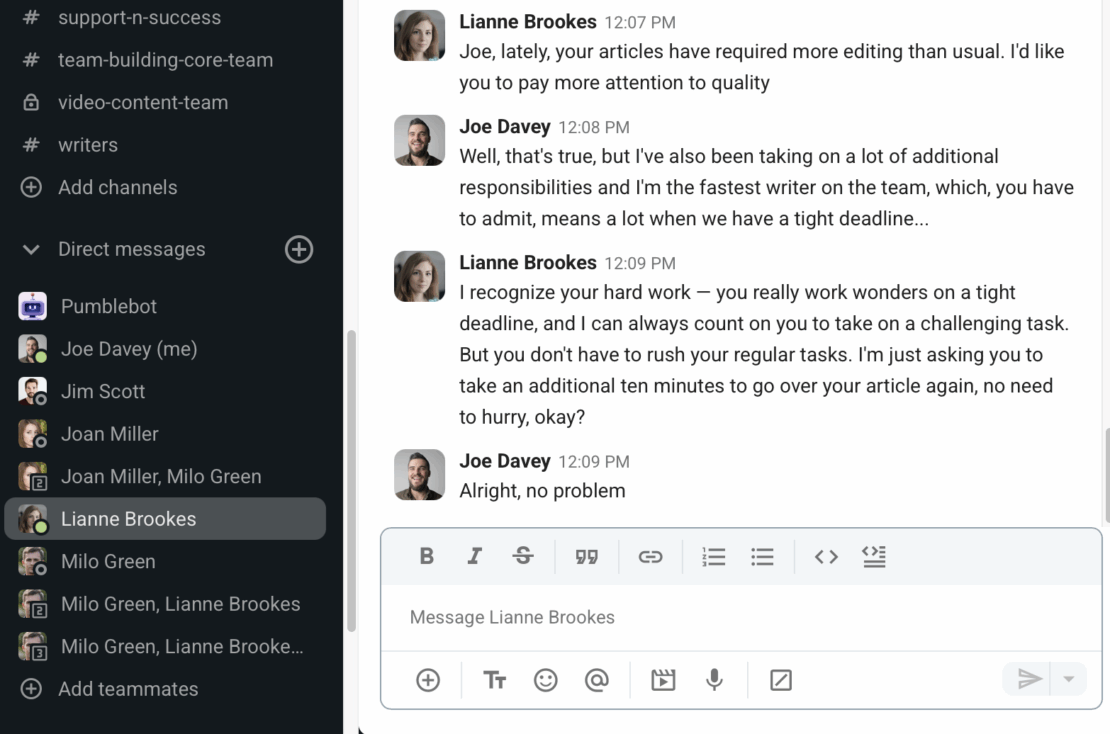
💡 PUMBLE PRO TIP
If all the conflict resolutions in the world can’t solve an issue with a coworker, chances are you might be dealing with a difficult person. To learn all the steps to dealing with the person causing you trouble, visit the link below:
Master the art of conflict resolution with Pumble
When emotions in the workplace run high, it’s easy to let them overpower reason and get into a conflict with a coworker.
It’s best to approach these situations with one thing in mind — you need to fight the problem, not each other.
As you’ve seen, conflict at work doesn’t have to result in a catty argument and hurt feelings. With the right conflict resolution language — and the right tools — you can keep communication healthy and productive.
With Pumble, a team communication and collaboration app, you’ll be able to catch, manage, and resolve conflict faster than ever. An all-in-one communication software, Pumble gives your team a space to:
- Talk things through privately with direct messages,
- Keep sensitive conversations focused using threads,
- Address issues transparently in dedicated channels, and
- Clear the air faster with voice or video calls.
Whether it’s giving constructive feedback, defusing tension, or finding common ground, Pumble helps you apply your conflict resolution skills in everyday situations and handle them before they escalate — all in one shared space.
See how smooth team communication can be — try Pumble today!





